Theatre History Podcast #54
Sighted Eyes/Feeling Heart: Tracy Heather Strain Shows Us a Different Side of Lorraine Hansberry
Lorraine Hansberry’s reputation will always be inextricably bound up with her best-known work, A Raisin in the Sun. But who was the woman behind this landmark play? Filmmaker Tracy Heather Strain explores Hansberry’s life in her new documentary Sighted Eyes/Feeling Heart, which premieres on PBS on 19 January 2018. Tracy’s film brings a new perspective to Hansberry, showing us not just the playwright who became the first African-American woman to have a play produced on Broadway, but also someone who was a political radical and who embraced her identity as a lesbian at a time when it was dangerous to do so. Tracy joins us to discuss her film and to give us new insights into this crucially important figure in American theatre.
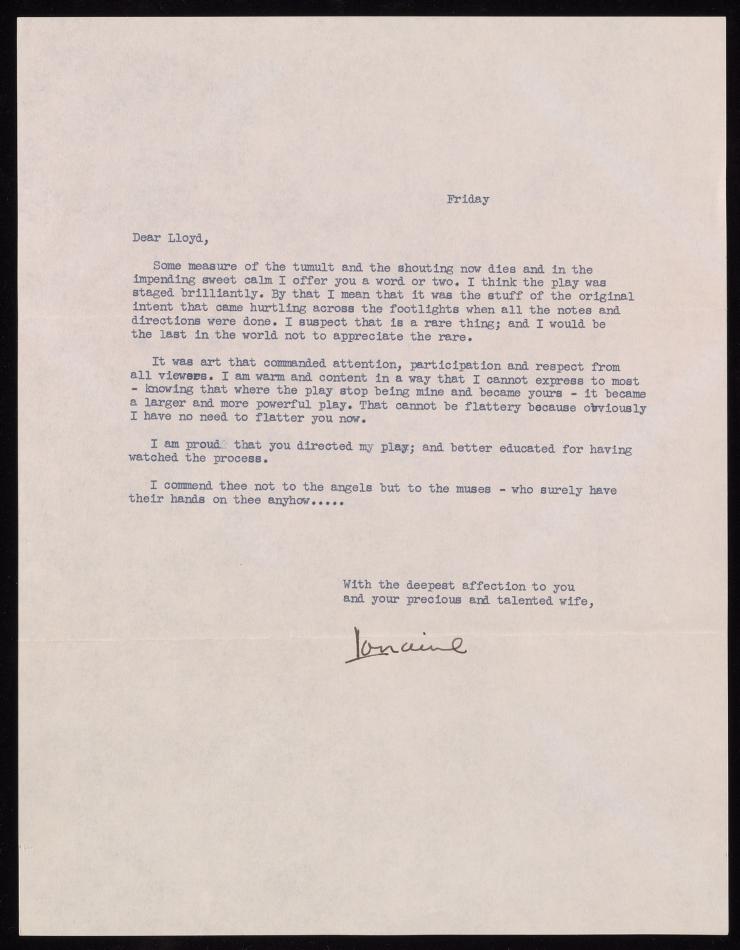
Links:
- Learn more about Sighted Eyes/Feeling Heart at the film’s official website, and find out when and how you can watch it.
- Visit the film’s site on PBS’s American Masters page to find more information and additional material.
- Watch Tracy discuss the film on WGBH’s Basic Black.
- Find out what’s in the Lorraine Hansberry Papers at the New York Public Library’s Schomburg Center for Research in Black Culture, and discover more about Hansberry and material related to her life at the Lorraine Hansberry Literary Trust.
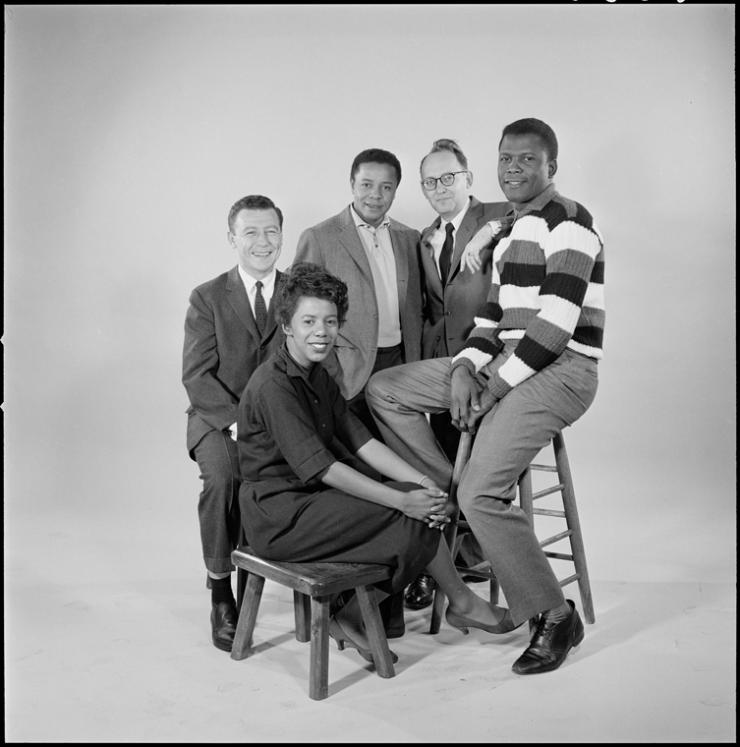
Additional Reading:
- A Raisin in the Sun and The Sign in Sidney Brustein’s Window, by Lorraine Hansberry
- Les Blancs: The Collected Last Plays: The Drinking Gourd/What Use Are Flowers?, by Lorraine Hansberry
- To Be Young, Gifted, and Black: A Portrait of Lorraine Hansberry in Her Own Words
- A Raisin in the Sun: The Unfilmed Original Screenplay
- Hansberry’s Drama: Commitment Amid Complexity, by Steven E. Carter
- “Reracializing the Ordinary American Family: A Raisin in the Sun” in Visions of Belonging: Family Stories, Popular Culture, and Postwar Democracy, 1940-1960, by Judith E. Smith
- “Lorraine Hansberry,” by Margaret Wilkerson, and “Simone de Beauvoir and The Second Sex: An American Commentary,” by Lorraine Hansberry in Words of Fire: An Anthology of African-American Feminist Thought, edited by Beverly Guy-Sheftall
- The Black Arts Movement: Literary Nationalism in the 1960s and 1970s, by James Smethurst
- Race Against Empire: Black Americans and Anticolonialism, 1937-1957, by Penny M. Von Eschen
- Freedom Dreams: The Black Radical Imagination, by Robin D.G. Kelley
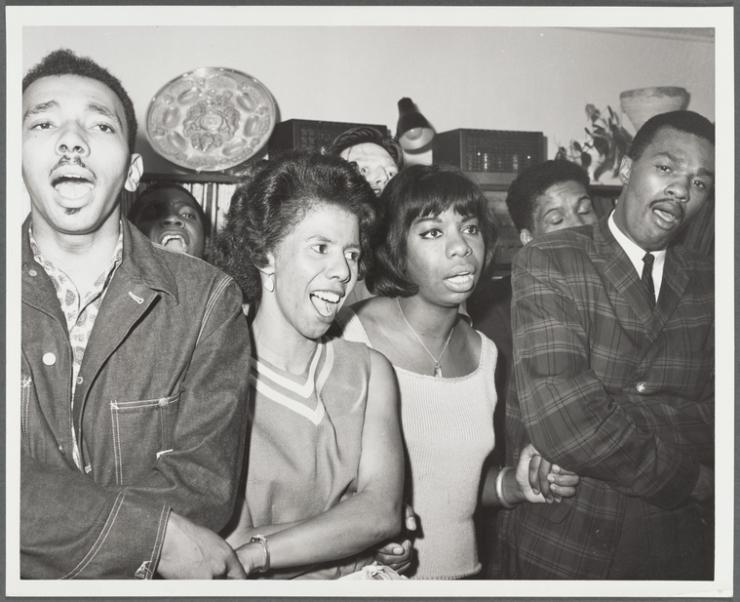
Hi, and welcome to the Theatre History Podcast. I'm Mike Lueger. Most of us have at some point encountered Lorraine Hansberry's landmark play, A Raisin in the Sun. Whether on stage, in the classroom or somewhere else, but who was Hansberry? Tracy Heather Strain is helping us to learn more about the playwright and activist in the new documentary, Sighted Eyes/Feeling Heart, which she wrote and directed and which premiers on PBS on 19 January 2018. Tracy is a co-founder of the production company, The Film Posse and a professor of the practice in media and screen studies at Northeastern University. Tracy, thank you so much for joining us.
Tracy Heather Strain: Thank you for having me. I'm really excited to talk to you.
Michael: Who was Lorraine Hansberry and how did she develop into a playwright and activist?
Tracy: Well Lorraine Hansberry was someone who was born on the Southside of Chicago in 1930 to a family that was very much involved in activism, uplift of the negro people. She was from this family where her parents had gone to college, there were books in the house, she was the youngest of four children and separated by seven years so she spent a lot of time by herself. She was a watcher and thinker and a big reader so that, combined with seeing her, the passion that her family, and in particular she was close to her father, she started her training to be an activist at a very young age.
Her family was involved in trying to make like better for African Americans and her father, who was a well off real estate developer, who owned several buildings during those years of the Great Depression and beyond, he used this foundation that he created to support civil rights activities, including the family moving into a previously all white street in a section of the Southside and they were forced out by a legal ruling. The case went all the way to the Supreme Court, which her father won on a technicality, but it did open up 500 homes to African Americans.
Before that happened, while her father was away, her mother had to guard the house with a German Luger, as Lorraine recalls, a brick almost hit Lorraine Hansberry in the head one evening so she learned that it wasn't always a safe thing to also be an activist in trying to do things to change society.
Unfortunately her father passed away and the way we tell it in our film is that it seems like she saw his way of trying to achieve racial justice as maybe unsuccessful because he died an embittered exile in Mexico, frustrated with America and so she decided she wanted to be a journalist.
She goes off to the University of Wisconsin for about two years and leaves feeling like she wants an education of another kind. Moved to New York and becomes involved with the newspaper Freedom. She worked there for several years and was a part of a community of artists activists and so she got this really great grounding on being someone who was committed to ideals to try to change things for African Americans, but also, these were people who were creative people. Paul Robeson was a stage and screen star and he was a singer. Alice Childress was an actress. She'd been on Broadway in Anna Lucasta, so she was getting a grounding as well in the arts being a writer, but a writer who always felt that there was a mission always a part of this creative output.
Michael: Now speaking of that creative output, as we mentioned at the top of the show, the best-known work by Hansberry is A Raisin in the Sun. Can you talk about who that play came to be and why it was so important?
Tracy: Well, Lorraine Hansberry had gone to see a production, we never really were able to pin down what production it was, but she came home really frustrated and said to her husband that she was going to write a play that basically presented African Americans in a more realistic light. She, along with many other people of that period, and even some today, get frustrated about the representation of African Americans and so she sat down to write a play that was going to "tell the truth about black people's experiences" and so she worked on it. She'd been working on other things and even a novel and other sketches, but what she ended up writing originally was called The Crystal Stair, also titled after a Langston Hughes poem, and then she wrote to some friends and they all liked it. One in particular Phil Roads decided that he wanted to take it to Broadway.
Now Phil Roads wasn't a Broadway producer, he was a record producer so everyone was doing their jobs for the first time and it was interesting because Lorraine expected her play to be read, performed maybe up in Harlem in Club Barron where a friend of hers play had been produced. She didn't have necessarily expectations of Broadway when she was writing the play that became A Raisin in the Sun.
It was really hard for them to raise the money for the play because A Raisin in the Sun was a drama and to sort of paraphrase from some of the interviewees, no one was interested in seeing a play about black people emoting. Musicals might have been okay, some kind of comedy shtick thing might have been okay, but black people in drama? No. There'd been some and they weren't very successful. Take A Giant Step for example had been on Broadway, which is by the way Lou Gossett, Jr.'s Broadway premiere, so people thought it was a real gamble and fortunately for us, Phil Rose is tenacious, Lloyd Richards was an excellent director. Lloyd Richards became the first black person to direct a play on Broadway and Hansberry created characters that really resonated with not only the African American community, but with white audiences.
So much so that that became a problem after the play was successful, that people started talking about, "Well this could have been any family." In part, because it's the first time that many white Americans were identifying with a black protagonist. When the family decides, they're trying to decide whether ... Walter Lee's trying to decide whether he's going to take the money or not, people are rooting for him not to take the money to not move into the white neighborhood, but as one of our interviewees says, "Those same people would have been appalled if a black family had moved in next door to them in real life."
Michael: You know, Tracy, one of the most striking moments for me in the film is, you get this great access to these documents including this list that Hansberry makes of things that she's excited about and things that she's bored with, and on that list of things that she says she's bored with, this is I think some time in the early 1960s, she lists A Raisin in the Sun, a few years after it became this smash success. I'm curious. What other work does she produce for the theatre?
Tracy: Well Lorraine was working on several plays. It was published in the paper around the time that the movie was coming out because she got another hit of press around the time the moving was coming out in ’61 and she was working on a play about Toussaint L'Ouverture. She was working on a play based on something that happened to a friend of hers named Gin Briggs, which eventually became The Sign in Sidney Brustein's Window. She was working on a play about an Indian boy and a play based on a novel that was by Chestnut, and so she was doing, she had a lot of ambitious plans for plays she wanted to write in addition to having a novel that she ... Semi-autobiographical novel that she wanted to finish.
Unfortunately her health did not allow us to see those comes to fruition, but her play about Toussaint L'Ouverture was actually, some of it was presented on television in 1961. She and Lloyd Richards were on a television broadcast called Playwright at Work for which Frank Perry was the host and they performed a little bit of the Toussaint play and one of the people in this documentary that is an on camera witness, although we don't identify her as such, she's one of the actresses that's in that little snip it of Toussaint.
Michael: Given that A Raisin in the Sun has become such a familiar part of the American theatrical cannon, and as you mentioned, people come to start to think, "Oh, well you know, this is so broad, so universal. It could be any family." Given the reputation it's place in the cannon, I think it's easy to forget that Hansberry was this pretty radical figure and your film is great at reminding us about that. Can you tell us about her politics, as well as about her sexuality?
Tracy: One of the reasons I was interested in making this documentary about Lorraine Hansberry is that I became aware that it was pretty obvious that people didn't know who Lorraine Hansberry was. There's these photos of her wearing pearls and her hair's done. It's publicity. She's looking a certain way and she's been put on this pedestal of icon in a list of black firsts. Even the embodiment of middle class black aspirations in the midst of the Civil Rights Movement that she's encased.
As someone said last night on this program I was on, she's been preserved in a certain way, almost like a fossil in the amber. She's preserved in the amber, so what I wanted to do was to show that she was complex, like anybody, she's a complex person and in her case she's a very, very complex. You can easily connect her to the major movements of the time in which she lived. The Great Depression, the Great Migration, World War II, the Cold War. The peace movements, the early feminism and gay and lesbian movements. She's a part of all of these things during her lifetime and in terms of her radicalism, she was from this activist family and her family was actually a Republican even passed the time that many African Americans had switched to the Democratic party during the Depression.
Lorraine Hansberry ends up being involved in progressive politics during her time at the University of Wisconsin. She joins the Young Progressives of America and becomes the president her sophomore year and then after she leaves and moves to New York, she actually joins the Communist Party and becomes a member of a group called The Labor Youth League and that's where she ends up meeting her husband, Robert Nemiroff, through The Labor Youth League.
She was someone who was off picketing and she was in Harlem standing literally on soapboxes giving speeches and things like that. Unfortunately, we didn't have the material to show that in the documentary about her standing on the street corners giving speeches but she was very, very much an activist and after Lorraine Hansberry married Robert Nemiroff at some point during their relationship she either has come to the realization or has decided that she is a lesbian and I guess begins identifying herself, this is 1957, so this was before A Raisin in the Sun is on Broadway, as a married lesbian and she is writing letters with her initials to a [...] called The Daughters of Bilitis which was, their publication was called The Ladder and she was discussing things about being a married lesbian and the nature of being homosexual to use her term.
Part of those lists that you mentioned, she includes things about whether both liking and disliking being homosexual, so I think that she was juggling a lot of identities. By later in her life, she referred to herself as an old communist, or even at times a former communist, so I don't know if she considered, I don't think she necessarily considered herself a communist later in life, but I think her larger identity after a certain point was her identity as a closeted lesbian.
Michael: This is really fascinating in terms of, as you were saying, making Hansberry this complicated, real life figure, instead of this two-dimensional figure, as you mentioned with the pearls and publicity photos. I'm curious if there was a particular inspiration that led you to make this film, and I'd also love to know about the process of making it.
Tracy: You'd be happy to hear that I was inspired to make this film because I saw the play To Be Young, Gifted and Black when I was seventeen. My grandmother who had spent some time as a domestic during my childhood took me and my little sister to see the play. I lived in the near suburbs of Harrisburg, Pennsylvania at the Harrisburg Community Theatre and I was seventeen and Hansberry just had a powerful impact on me and she stayed in my head and then years later in the ’80s when I was seeing a lot of independent films and Spike Lee was making the call for people to make black films, I thought, "You know, there should be a film about Lorraine Hansberry."
The problem was, I wasn't even involved in film making at that time, but it was something that inspired me to take this plunge that I was actually thinking about and I got in and over time moved up and I met Robert Nemiroff when he came to Boston when he brought Les Blancs to the Huntington Theatre. He had adapted, tried to finish her uncompleted work and he gave a talk at the Boston Public Library and I spoke to him after, he signed my copy of the book and I told him, "There should be a film about Lorraine Hansberry." And he's like, "Oh, there's one in the works." So I looked forward to that and I waited and waited for it and then he died in 1991. I noticed still no documentary and I continued to move up and finally I worked for Blackside in 1997 on a series called I'll Make Me a World: A Century of African American Arts and did a short segment about Lorraine Hansberry's A Raisin in the Sun making it to Broadway as part of a larger one hour in the six-part series about the limits and opportunities for African American's in post-World War II America and the Hansberry story was an opportunity story.
I thought, "Oh, can I cross this off my list? Have I done my biography of Lorraine Hansberry?" But realizing after doing even more research on Lorraine Hansberry, by that time, I knew there was a bigger story to tell and I said, "No." I found out there was someone who had access to the materials for documentary use and took years but finally we connected in 2004, so we count the start of this project as 2004, so it's been a fourteen year long journey and the person I joined forces with Chiz Schultz, interestingly enough was one of the original producers of To Be Young, Gifted and Black so the original premiered at the Cherry Lane Theatre as an Off-Broadway production and so Chiz Schultz was one of those producers, and so I feel like it's all interesting, full circle for me.
I thought that it was going to be an easy journey raising money to make a documentary about Lorraine Hansberry, particularly given that A Raisin in the Sun is one of the most read plays in North America. It's read all around the world and it wasn't easy at all. Some people just wanted me to reduce the story to just talking about A Raisin in the Sun and it was a real eye opener that was very hard to raise the money.
Once the NEH, we received an NEH production grant, more people came on board, but also what happened over those fourteen years is that I think our society started changing and I think people are more aware of activism now and more open to different identities and so it seems like even though it was maybe painful for us, and very financially draining, the film seems to be coming out at the right time and so we feel really blessed to be receiving the kinds of notices we have to date.
Michael: A reminder that Sighted Eyes/Feeling Heart airs on PBS on 19 January. We'll post additional information in our show notes about the film and how you can watch it, as well as additional information about Lorraine Hansberry and about Tracy's work.
Tracy, thank you so much for talking to us about your film.
Tracy: Thanks again. It was a pleasure speaking with you.
Michael: If you'd like to continue today's conversation, please visit HowlRound.com and follow HowlRound and @TheaterHistory on Twitter and Facebook. You can also visit our website at theatrehistorypodcast.net where you can find links to all of our episodes and you can email your questions and comments about the show to [email protected].
A big thank you to the staff at HowlRound who make this show possible. Our theme music is the Black Crook Gallop, which comes to us courtesy of the New York Public Library Libretto Project and Adam Roberts. Thanks as well to Tipp Kress who designed our logo and finally thank you for listening.


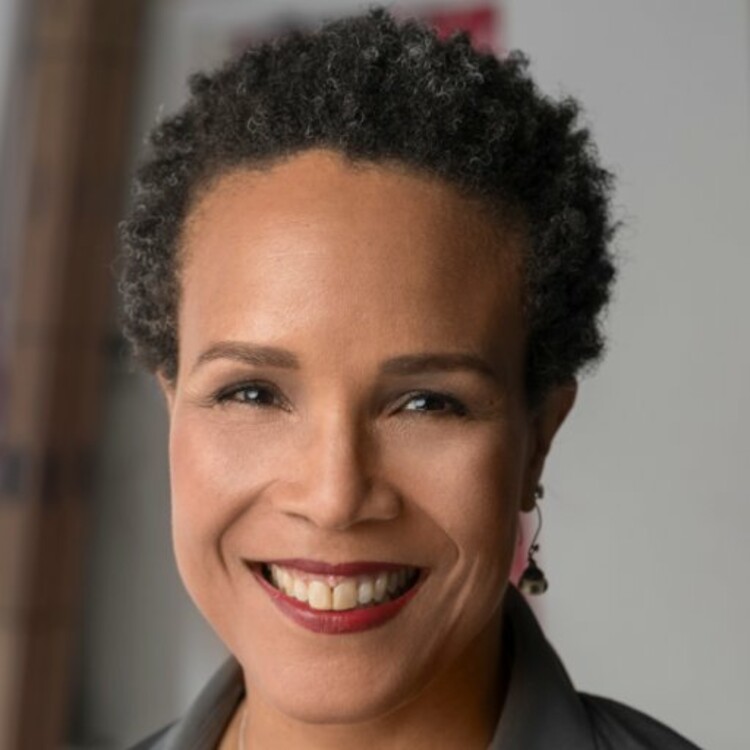
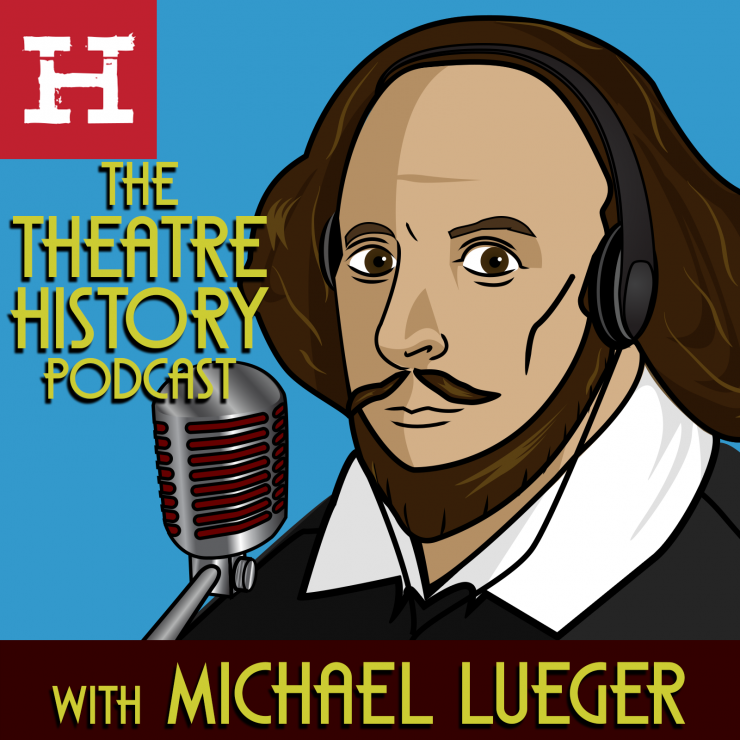
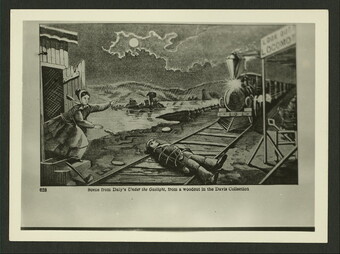


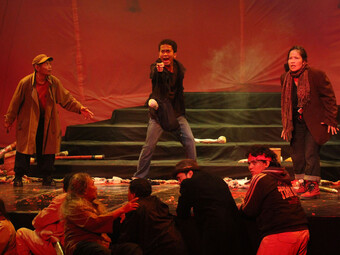

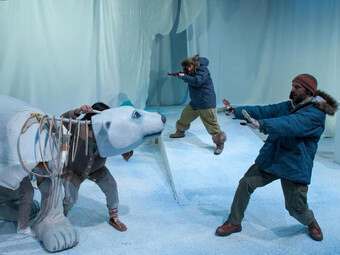

Comments
The article is just the start of the conversation—we want to know what you think about this subject, too! HowlRound is a space for knowledge-sharing, and we welcome spirited, thoughtful, and on-topic dialogue. Find our full comments policy here
I'm eager to see the film and am fascinated by the production history of A RAISIN IN THE SUN. I once read that an earlier draft depicted Mama, rather than Walter Lee, as the protagonist. Is this true?
great interview....just a correction I need to make...it was Daughters of Bilitis that published The Ladder and was the first Lesbian organization in the US.
Thank you! We've made that change in the transcription!